#René Antoine Ferchault de Réaumur
Explore tagged Tumblr posts
Photo

In 1730, René Antoine Ferchault de Réaumur created the temperature scale that is named after him. Poetry by Tom Sharp.
0 notes
Photo



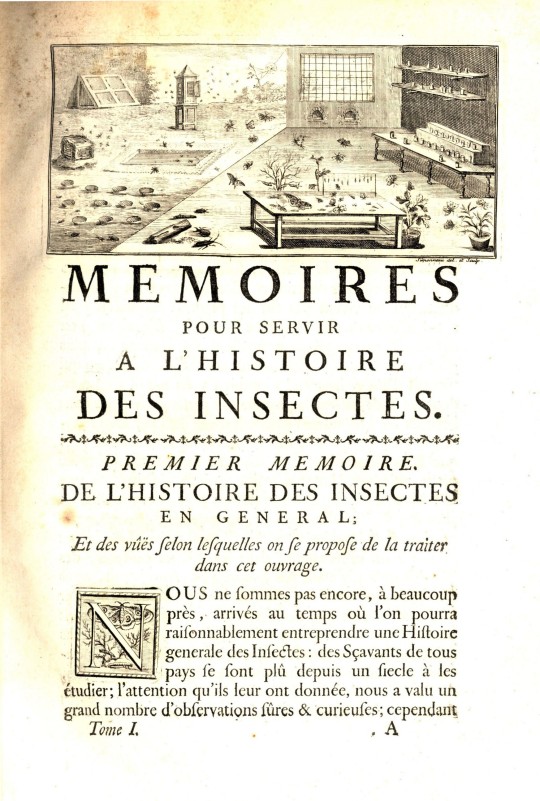

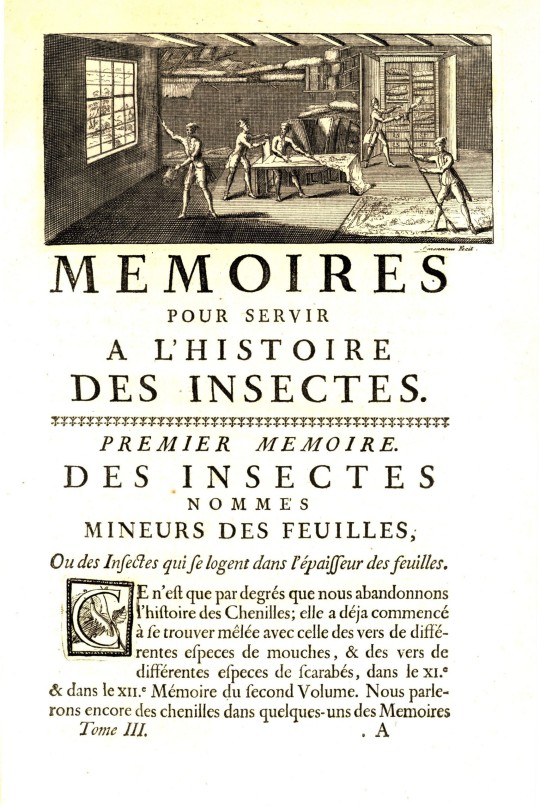

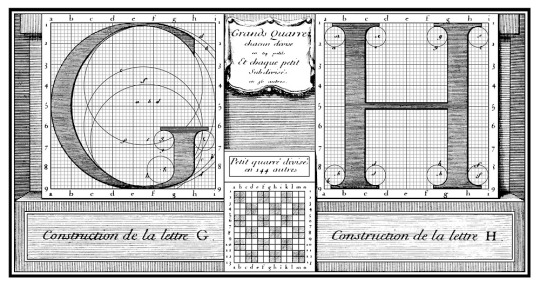
Typography Tuesday
ROMAIN DU ROI
This week we turn to the development of a typeface that was expressly a product of the Age of Enlightenment: the Romain du Roi, or the Roman typeface of the king. The typeface was commissioned by the Sun King, Louis XIV of France, in 1692 for the exclusive use of the Imprimerie Royale. Based entirely on Enlightenment principles, the type would have powerful implications for later French type designs, and exhibited, as the English historian S. H. Steinberg observes, “the cold brilliance distinctive equally of the absolute monarchy and the logical mind of France.”
The king charged French mathematician and engraver Nicolas Jaugeon, along with a committee of the Academy of Sciences, to deliberately turn away from the principles of calligraphy and epigraphy that had been the basis for previous type designs, and instead develop designs entirely on mathematical principles. The academicians drew up the design of each letter on a strictly analytical basis, using a rectangle subdivided into 2304 squares (64 x 36). The result was an aridity that caused William Morris two centuries later to exclaim that the artist had been ousted by the engineer. Fortunately, the eminent French punch-cutter Philippe Grandjean mellowed this austerity, cutting several sizes over the next 10 years. Although these types remained the exclusive property of the Imprimerie Royale, every French typographer imitated it as far as the royal privilege would permit, and would lead directly to the famous type designs of Pierre-Simon Fournier and the Didot family.
Shown here are pages from the six-volume series Mémoires pour servir à l'histoire des insectes by French entomologist René Antoine Ferchault de Réaumur (1683-1757), published in Paris by L'Imprimerie royale from 1734-1742. These pages show the practical use to which the efforts of Grandjean and his shop were put. The image of Charles Louis Simonneau‘s engraved plate of Jaugeon’s designs used by Grandjean to make his punches is from Warren Chappell’s A Short History of the Printed Word. The G and H in the last image was randomly grabbed from the interwebs.
View more posts from our copy of Réaumur’s series on insects.
View our other Typography Tuesday posts.
#Typography Tuesday#typetuesday#Romain du Roi#Louis XIV#Imprimerie Royale#Nicolas Jaugeon#French Academy of Sciences#Philippe Grandjean#French type#René Antoine Ferchault de Réaumur#Mémoires pour servir à l'histoire des insectes#Charles Louis Simonneau#17th century type
94 notes
·
View notes
Photo

Dyed felt samples used in preparing a French encyclopedia of crafts: Descriptions des arts et métiers, 1721-1787, René Antoine Ferchault de Réaumur (1683-1757). MS Typ 432.1 (4), Houghton Library, Harvard University
2 notes
·
View notes
Text
Edward Stevens: facts
After the suicide of his uncle and guardian Peter Lytton, James Hamilton went off to train with an elderly carpenter and his younger brother, Alexander Hamilton, was whisked off to the King Street home of Thomas Stevens, a well-respected merchant and his wife, Ann. Of the five children born to the married couple, Edward born a year before Alexander became his closest friend, "an intimate acquaintance begun in early youth," as Hamilton described their relationship. As they both matured, the often seemed to display parallel personalities: both were quick and clever, disciplined and persevering, fluent in French, versed in classical history, held the same morals and were interested in medicine. In later years, Edward reminded Alexander of "those vows of eternal friendship, which we have so often mutually exchanged," he often fretted about his friend's delicate health.
Their physical appearance was close. Thirty years later, when Timothy Pickering, then secretary of state, first set eyes on Edward Stevens, he was torn by their resemblance. "At first glance, I was struck with the extraordinary similitude of his and General Hamilton's faces–I thought they must be brothers." Pickering confided with shock to Edward's brother-in-law, James Yard of St. Croix only to be told that this remark was said many times before. Pickering even concluded to himself that they were in fact brothers and Hamilton was an illegitimate child of "Stevens".
Edward Stevens also went to Kings College and years before Hamilton. November 11th, 1769 is Hamilton's oldest letter surviving in his pen–the recipient was Stevens. Arriving in New York 1773, the only person he knew was Stevens. In his first months at King's, he and a friend, Robert Troup, formed a club that gathered weekly to hone debating, writing and speaking skills. Stevens was one of the members.
While married to Elizabeth Schuyler, Edward Stevens became "the guardian angel" of the household and he appeared at providential moments and tended to Eliza reassuring her she was in no danger at times of illness. During the yellow fever epidemic in 1793, Edward Seven turned up Philadelphia and attended to both Alexander and Eliza when they both contracted the disease. He treated with bark, wine, and cold baths, a regimen that stirred some controversy since Stevens scorned the bloodletting treatment advocated by most doctors including Rush. Upon his recovery, Hamilton became an advocate for Stevens's method.
(Text above is credited to sonofhistory)
- He cured Eliza and Alexander of the fever within five days
- Stevens graduated from King's College in 1774 and then sailed to Britain to study Medicine at the University of Edinburgh
- He gained his doctorate (M.D.) on September 12, 1777
- Stevens' dissertation on gastric digestion was entitled "De alimentorum concoction"
- Based on this work, he was the first researcher to isolate human gastric juices
- His work confirmed that of René Antoine Ferchault de Réaumur, who showed the digestive power of gastric juices, and helped dispel earlier theories of digestion
- Stevens's work on digestion would influence Lazzaro Spallanzani
- On January 20, 1776, Stevens was admitted to the university's Royal Medical Society
- He served as the Society's president for the academic year 1779/1780. Stevens remained in Edinburgh until 1783 and was one of the joint founders of the Royal Society of Edinburgh in that year
- Stevens returned to St. Croix in 1783. He worked there as a physician for ten years
- He maintained his friendship with Hamilton through correspondence
- In adulthood, Hamilton tended to shun his turbulent adolescence, and Stevens was the only person from his childhood, including even his closest living family members, with whom he kept in regular contact
- Following the death of his wife, Eleanora, in 1792, Stevens decided to move to North America
- Stevens had considered a move to Guyana, but William Thornton urged him to choose the United States
- Also in 1792, Stevens married Hester Kortright Amory. Stevens ended his ten years of practicing medicine in the Caribbean and moved to Philadelphia in 1793
- (A/N" so he was widowed one year and married that same year, good job Ned)
- While in Philadelphia, he engaged in a controversy with Benjamin Rush on methods for treating an outbreak of yellow fever
- Stevens was admitted to the American Philosophical Society on April 18, 1794. Stevens's work in digestion may have influenced other researchers in Philadelphia, notably John Richardson Young
- In 1795, Stevens was appointed as a professor at King's College
- Stevens served as the United States consul-general in Saint-Domingue (later Haiti) from 1799 to 1800
- Stevens's title, "consul", suggested a diplomat attached to a country not a colony, reflecting the administrations view of the Haitian situation
- Following his arrival in Haiti in April 1799, Stevens succeeded in accomplishing several of his objectives, including: the suppression of privateers operating out of the colony, protections for American lives and property, and right of entry for American vessels
- Stevens pushed for similar privileges for the British, who, like the United States, were engaged in war with France
- Negotiations between Haiti and Britain were difficult given Haiti's fears of Britain's desire to take control of the colony, and Britain's fears of the Haitian slave revolt spreading to its own Caribbean colonies. In fact, Stevens had to serve as the British agent for a time since Haitian troops feared having a British official in the colony
- Little is known of Stevens's last years. For two and a half months in 1809-10, during the British occupation of the Danish West Indies, Stevens served as President of St. Croix. He corresponded with David Hosack, including a letter introducing his son in 1823
- He outlived Hamilton by thirty years
- He also referred to Hamilton as "My Dr. Ham"
- Meanwhile, Hamilton called Edward "Ned" and "Neddy" and often reffered to him as his "particular friend"
- "Throughout the remainder of 1803 Stevens attended the American Philosophical Society regularly. He is recorded as being present on October 7, October 21, November 4, November 18. In 1804 he attended on February 17 and February 24. A minute on August 17 of that year is confusing. Apparently he donated two volumes of books, but the precise readings of the Minutes is unclear. The description is "Steven's Wars. 2 Vols". Thereafter Stevens never attended again. It will be recalled that in 1804 Alexander Hamilton died in a duel with Burr, and possible then, or later Stevens retired to St Croix. David Hossack wrote to him in St. Croix in a letter dated September 20th, 1809, from New York, so by that year, certainly, Stevens had left the United States."
— Edward Stevens: Gastric physiologist, physician and American statesman
(Ned must have been significantly distressed by Hamilton's death and perhaps even moved back to St Croix because of this)
Some letters between Ned and Alexander:
"I have written you so repeatedly since my Arrival in Scotland, without having ever received an Answer... I am perfectly at a Loss I assure you, my Dr: Hamilton, to account for your Silence. I have written you frequently, and, as I know that you was at a Distance from New York, enclosed your Letters to some of our common Friends in that City, and requested them to transmit them to you. But I have not been able to collect the least Intelligence concerning you from any Quarter..."
—To Alexander Hamilton from Edward Stevens, 23 December 1777
"Who could have imagined my friend that a man of your greatness, of your delicacy of constitution, and of your tranquility, would have shone so much, and in a short space of time, in the Champ de Mars, that you did it? I assure you, my Colonel, that I have tormented myself a great deal about your health, which has always been very dear to me since the beginning of our acquaintance. I do not know how you can sustain the hardships and fatigues of a winter campaign in America. Surely your constitution would never have sustained such severity without the assistance of something very extraordinary."
— To Alexander Hamilton from Edward Stevens, 1778
"Dear Edward
This just serves to acknowledge receipt of yoursper Cap Lowndeswhich was delivered me Yesterday. The truth of Cap Lightbourn & Lowndes information is now verifyd by the Presence of your Father and Sister for whose safe arrival I Pray, and that they may convey that Satisfaction to your Soul that must naturally flow from the sight of Absent Friends in health, and shall for news this way refer you to them. As to what you say respecting your having soon the happiness of seeing us all, I wish, for an accomplishment of your hopes provided they are Concomitant with your welfare, otherwise not, tho doubt whether I shall be Present or not for to confess my weakness, Ned, my Ambition is prevalent that I contemn the grov'ling and condition of a Clerk or the like, to which my Fortune &c. condemns me and would willingly risk my life tho' not my Character to exalt my Station. Im confident, Ned that my Youth excludes me from any hopes of immediate Preferment nor do I desire it, but I mean to prepare the way for futurity. Im no Philosopher you see and may be jusly said to Build Castles in the Air. My Folly makes me ashamd and beg youll Conceal it, yet Neddy we have seen such Schemes successfull when the Projector is Constant I shall Conclude saying I wish there was a War.
. . .
PS I this moment receivd yoursby William Smith and am pleasd to see you Give such Close Application to Study."
- Alexander Hamilton to Edward Stevens, St Croix, November 11th, 1769
(Alex, hon, GET YOUR GRAMMAR TOGETHER MY BOY)
#Edward Stevens#Alexander Hamilton#Historical#Facts#Founding father facts#Historical facts#NEDDY#YEET#historical Hamilton facts#my stuff
21 notes
·
View notes
Photo
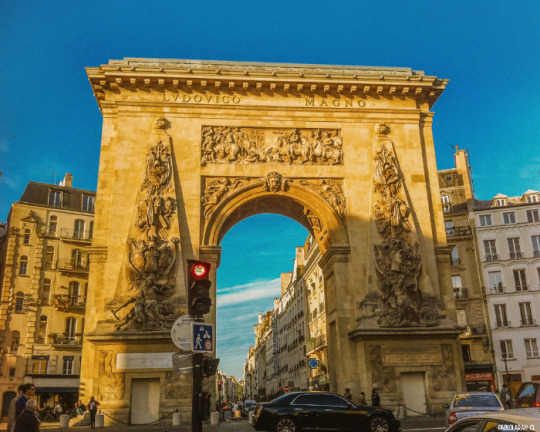
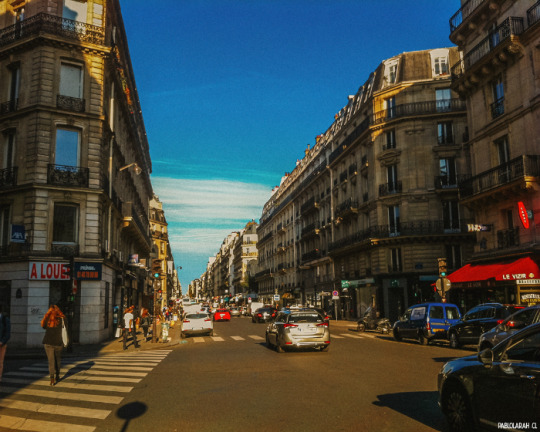
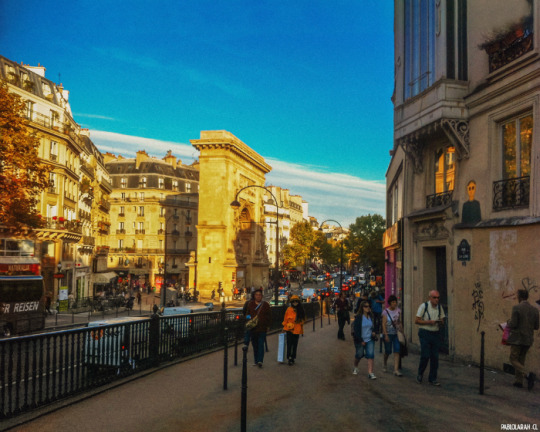
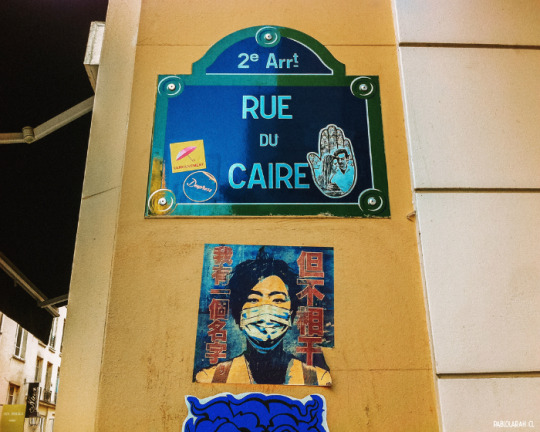
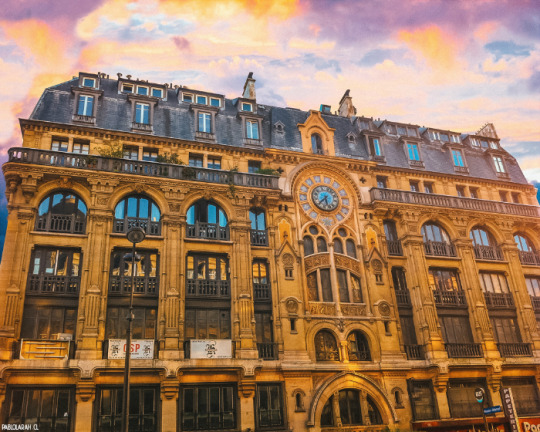
Quarantine Diaries
La rue d’Hauteville est une voie publique située dans le 10e arrondissement de Paris. Elle débute au 30-34, boulevard de Bonne-Nouvelle, et finit 1, place Franz-Liszt. Elle rencontre entre-temps la rue de l’Échiquier, la rue d’Enghien, la rue Gabriel-Laumain, la rue des Petites-Écuries, la cité Paradis, la rue de Paradis, la rue des Messageries, la rue de Chabrol. Elle débouche sur la perspective de l’église Saint-Vincent-de-Paul, ce qui est l’occasion d’un gag récurrent du film Zazie dans le métro.
---
The Porte Saint-Denis is a Parisian monument located in the 10th arrondissement, at the site of one of the gates of the Wall of Charles V, one of Paris' former city walls. It is located at the crossing of the Rue Saint-Denis continued by the Rue du Faubourg Saint-Denis, with the Boulevard de Bonne-Nouvelle and the Boulevard Saint-Denis. The Porte Saint-Denis was the first of four triumphal arches to be built in Paris. The three others are the Arc de Triomphe du Carrousel (1806-1808), Porte Saint-Martin (1674), and Arc de Triomphe (1836).
---
The Porte Saint-Denis is a triumphal arch inspired by the Arch of Titus in Rome. The monument is 24.65 m (80.9 ft) high, 25 m (82 ft) wide, and 5 m (16 ft) deep. The arch itself is 15.35 m (50.4 ft) high in the center and 8 m (26 ft) across.
The main arch is flanked by obelisks applied to the wall face bearing sculptural groups of trophies of arms. Above the main arch, the southern face carries a sculptural group by Michel Anguier of "The Passage of the Rhine" in a sunk panel, while the north face carries allegorical figures of the Rhine and the Netherlands. The entablature bears the gilded bronze inscription LUDOVICO MAGNO, "To Louis the Great". Two smaller pedestrian walkways were built through the obelisk pedestals but they have now been closed.
---
La rue du Caire est une voie publique située dans le 2e arrondissement de Paris. Elle débute au 111, boulevard de Sébastopol et se termine au 2, place du Caire. Le nom du Caire lui fut donné en mémoire de l'entrée victorieuse des troupes françaises au Caire, le 23 juillet 1798. Cette rue a été ouverte à la fin de l'année 1799 sur une partie des bâtiments et des jardins du couvent des Filles-Dieu, rue Saint-Denis.
La bataille des Pyramides a lieu le 3 thermidor an VI (21 juillet 1798) entre l'Armée française d'Orient commandée par Bonaparte et les forces mamelouks commandées par Mourad Bey, lors de la campagne d'Égypte.
Dans un souci de propagande, Bonaparte décide d'appeler cette victoire « bataille des Pyramides », nom plus glorieux que « bataille du Caire » ou « bataille d'Embabech » (où se trouvait l'emplacement du camp de Mourad Bey et où eurent lieu effectivement les combats), donnant ainsi à croire qu'elle s'était déroulée au pied même des célèbres monuments. C'est d'ailleurs ainsi que l'imaginaire collectif la représente souvent, notamment dans des tableaux. En réalité, les pyramides devaient tout au plus être vaguement visibles à l'horizon.
---
Rue Réaumur
Elle porte le nom du physicien et naturaliste français René-Antoine Ferchault de Réaumur (1683-1757).
Rue Réaumur No 61-63 : construction Art nouveau de style néo-gothique, construite par les architectes Philippe Jouannin et Édouard Singery à partir de 1898.
Les sculptures créées par les frères Pierre François dit « Francis » et Aimé Jacquier « et compagnie » représentent les mois de l'année, les signes du zodiaque et les saisons.
#architecture #arquitectura #arquitetura #StreetPhotography #StreetPhotographyInColors #IG_StreetPhotography #StreetPhotographyCommunity #StreetPhoto #PeopleInFrame #PhotoDocumentary #StreetPhotographyInternational #StreetPhotographyWorldwide #CandidShots #Paris #France #Europe #ParisMaVille . . . . Made with ❤ & @photoshop
4 notes
·
View notes
Photo

Philippe Simonneau, vignette for René Antoine Ferchault de Réaumur, Mémoires pour servir à l'histoire des insects, vol. 2 (Paris: de L'Imprimerie Royale, 1736), premier mémoire, p. 1, ETH-Bibliothek Zürich, Rar 8716
in:
Dominik Hünniger: Visible Labour? Productive Forces and Imaginaries of Participation in European Insect Studies, ca. 1680–1810. in: Berichte zur Wissenschaftsgeschichte. 2021, 44, 180.
0 notes
Photo
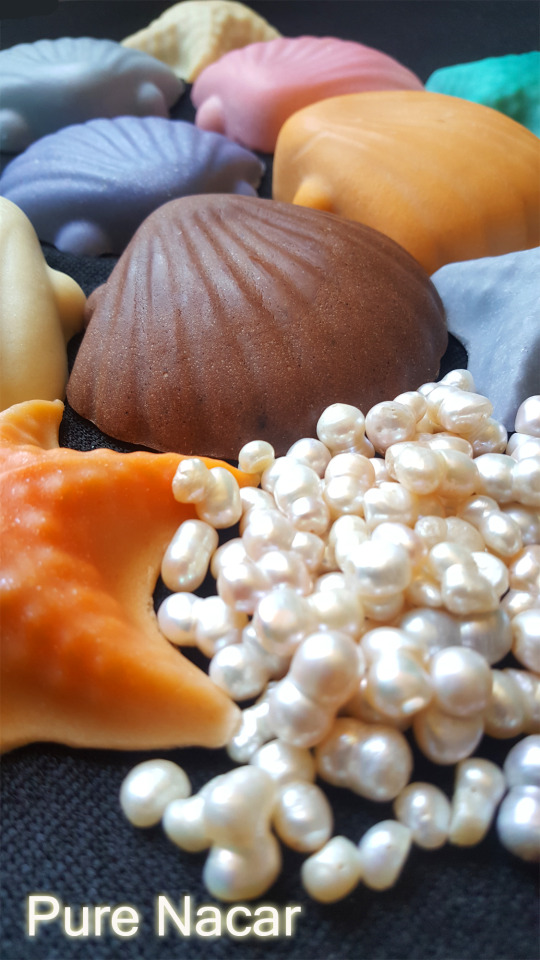
La restringida distribución geográfica de las ostras perleras, así como los mitos y leyendas en torno a las perlas retardaron el conocimiento científico de su formación. Los chinos desde el siglo V de nuestra era, intuyeron de manera bastante precisa el origen de las perlas, mientras que los europeos del siglo XVI seguían creyendo que las perlas se formaban a partir de gotas de lluvia solidificadas. Hasta 1710 René-Antoine Ferchault de Réaumur afirmó que las perlas eran pedazos de nácar que el animal formaba lentamente al secretar capas concéntricas alrededor de un cuerpo extraño que le producía irritación. A principio del siglo XX, la mayoría de los investigadores estaban convencidos de que las perlas se formaban en respuesta a una irritación provocada por la intrusión de un parásito o de cualquier cuerpo extraño al animal
0 notes
Text
Can Drugs Help Us Focus? Casey Schwartz, You Better Watch Your Speed

The 19th century harbored a fad for feats of attention — “ostentatious learning,” they were called. The naturalist Charles Bonnet famously spent 21 days contemplating a single aphid. The entomologist René Antoine Ferchault de Réaumur once tallied 84,000 bees leaving a hive. from Pocket https://ift.tt/2wlZUwS via IFTTT
0 notes
Photo

In 1730, René Antoine Ferchault de Réaumur created the temperature scale that is named after him. Poetry by Tom Sharp.
0 notes
Photo
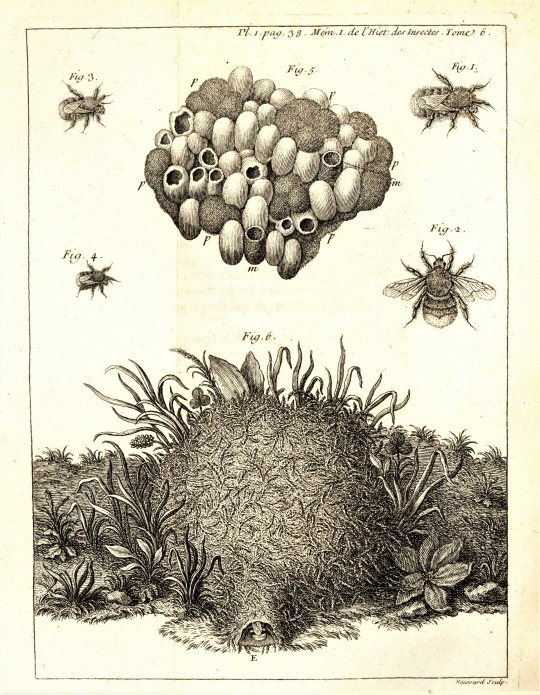





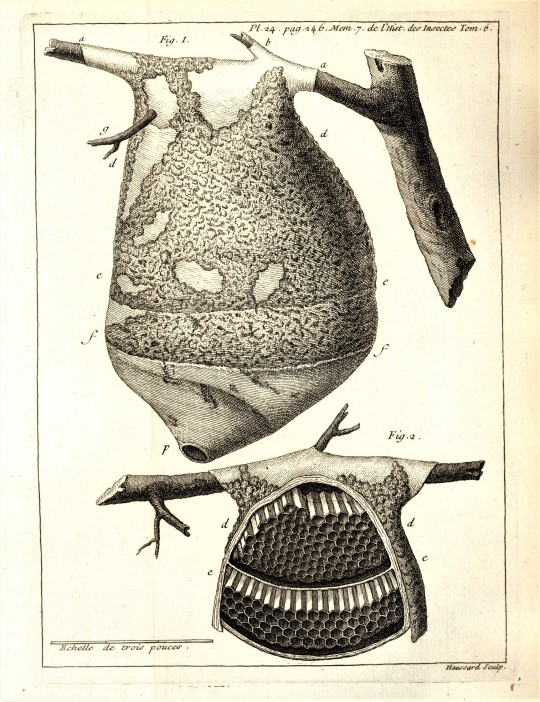



World Bee Day, May 20, 2020
Happy World Bee Day! To celebrate these great pollinators we present copper plate etchings of various bee species and even some illustrations of beekeeping (or apiculture) from the six-volume series Mémoires pour servir à l'histoire des insectes by French entomologist René Antoine Ferchault de Réaumur (1683-1757), published in Paris by l'Imprimerie royale from 1734-1742. The set includes over 260 engraved illustrations of insects. The illustrations we are featuring today were engraved by Pierre Filloeul and Jean Baptiste Haussard.
May 20 was designated as World Bee Day in honor of the birthday anniversary of Anton Janša, the Slovenian pioneer of modern apiculture.
See other posts we’ve done for World Bee Day here.
View more posts about Mémoires pour servir à l'histoire des insectes
–Sarah, Special Collections Graduate Intern
#World Bee Day#Mémoires pour servir à l'histoire des insectes#René Antoine Ferchault de Réaumur#l'Imprimerie royale#Pierre Filloeul#Jean Baptiste Haussard#copperplate engraving#copperplate etching#engravings#insects#bees#pollinators#natural history#scientific illustration#beekeeping#May 20#insect illustrations#Anton Janša#sarah#Sarah Finn#etchings
135 notes
·
View notes
Text
Bằng bí quyết này, người Ai Cập cổ có thể khiến trứng gà tự nở không cần ấp, 1000 con mỗi lần
Người Ai Cập hơn 2000 năm trước đã sở hữu một công cụ giúp trứng gà tự nở với số lượng lớn khiến người phương Tây kinh ngạc vì khi đó các nông trại toàn châu Âu vẫn phải dựa vào gà mái để ấp trứng.
Bên cạnh câu chuyện về xác ướp, kim tự tháp và các vị thần, Ai Cập còn được biết đến là sở hữu nh���ng phát minh, công trình kiến trức cực kỳ có giá trị mà nhiều người ít biết đến. Như khi nhà côn trùng học người Pháp René Antoine Ferchault de Réaumur (1683 – 1757) lần đầu ghé Cairo, ông đã ca ngợi lò ấp trứng của Ai Cập là kiệt tác kiến trúc giá trị còn hơn cả Đại kim tự tháp Giza.
Lò ấp trứng Ai Cập cổ là một kiểu kiến trúc 2 tầng, bao gồm 5 cặp buồng đối xứng được ngăn cách nhau bởi hành lang ở giữa. Tầng dưới dùng để xếp trứng gia cầm đã thụ tinh, có thể chứa tối đa 4500 quả. Tầng trên đốt lửa, đảm bảo nhiệt độ tỏa xuống luôn vừa bằng với sức nóng dưới bụng gà mẹ.
[caption id="attachment_1156484" align="alignnone" width="549"] Một lò ấp trứng truyền thống của người Ai Cập (Ảnh: ancient-page)[/caption]
Thú vị là cho đến tận bây giờ, 2000 năm đã trôi qua và khoa học công nghệ can thiệp vào mọi thứ, lò ấp trứng Ai Cập cổ vẫn được dùng ở cả đồng bằng sông Nile lẫn các vùng nông thôn trên khắp Châu Âu.
Phát kiến làm người châu Âu kinh ngạc
Người phương Tây tiến vào Ai Cập vào thu được khối kiến thức khổng lồ kể từ sau cuộc xâm lược Ai Cập của Alexander Đại Đế (356 –323 TCN).
Ban đầu, họ kinh ngạc trước những công trình kiến trúc khổng lồ như cung điện, đền thờ, kim tự tháp. Kế đến, họ bội phục hiểu biết toán học sâu sắc, nghệ thuật chế tạo giấy cói lạ lùng. Không ít các nhân vật uyên thâm đã cất công vượt đường trường đến Ai Cập để tận mắt chứng kiến, trong đó có Aristotle (384-322 TCN), nhà triết học Hy Lạp lừng danh nhất.
[caption id="attachment_1156485" align="alignnone" width="603"] Nó có thể ấp cùng lúc hàng ngàn quả trứng mà không cần gà mái ấp (Ảnh: ancient-page)[/caption]
Thế nhưng cái khiến Aristotle "há hốc cả miệng" lại không phải là những công trình kiến trúc đồ sộ, mà là cảnh tượng hàng ngàn con gà con ồ ạt chui ra từ... một cái lò. Về nhà, Aristotle viết rằng ở Ai Cập, "trứng tự nở thành gà con". Ai nấy ngỡ ngàng không tin nổi. Khổ nỗi, ai lại nghi ngờ một đại hiền triết như Aristotle?
Sau Aristotle chừng 200 năm, Diodorus Siculus (90-30 TCN), nhà sử học La Mã nổi tiếng lại tiếp bước. "Đáng kinh ngạc hơn cả là cách người Ai Cập chăn nuôi gia cầm gia tăng số lượng con. Họ không ấp trứng bằng cách tự nhiên chúng ta đều biết mà dùng chính đôi tay của mình, với một kỹ xảo đặc biệt, tạo ra nhiều không đếm xuể" - ông ghi ch��p.
Gà con chui ra từ đống phân?
Về cơ bản, cái lò mà Aristotle từng thấy là một kiến trúc 2 tầng được đắp bằng bùn. Xét trên mặt cắt ngang, nó bao gồm 1 hành lang trống và cặp buồng 2 tầng đối xứng.
Một lò ấp trứng có thể có tối đa 5 cặp buồng, đủ không gian để xếp tới 4500 trứng. Mái của 5 cặp buồng này có hình chóp, hở đỉnh để tiện bề thoát khói. Sau khi xếp trứng vào tầng dưới, người ta nổi lửa ở tầng trên, cẩn thận trông coi, giữ nhiệt.
[caption id="attachment_1156486" align="alignnone" width="598"] Tranh vẽ lò ấp trứng của người Ai Cập cổ (Ảnh: ancient-page)[/caption]
Nằm ở Châu Phi nên Ai Cập cũng nóng bức, nghèo cây xanh như bất cứ quốc gia Lục Địa Đen nào khác. Thế nên thay vì vất vả tìm củi, người ta thu gom phân khô làm nhiên liệu đốt. Tuy Aristotle lầm rằng gà con chui lên từ đống phân, nhưng quả thật chúng vẫn nhờ có phân mà nở.
Xuất hiện muộn vì gà vốn không phải động vật bản địa
So với kiệt tác kiến trúc lâu đời như kim tự tháp thì lò ấp trứng xuất hiện khá muộn. Vốn dĩ, gà không phải là động vật bản địa của Châu Phi mà từ Châu Á. Khoảng 10.000 năm trước, chúng bắt đầu được thuần hóa, nuôi làm thức ăn. Chuyện thông thương rộng khắp đưa chúng ra khỏi cái nôi của mình, cuối cùng cập bến Ai Cập.
Tại Ai Cập, chỉ đến thời kỳ thuộc Hy Lạp (332-30 TCN), thịt gà mới là một phần của thực đơn. Với trí thông minh siêu việt, người ta sớm am tường nguyên tắc ấp trứng và vận dụng trong thực tế.
[caption id="attachment_1156483" align="alignnone" width="700"] Đến thế kỉ 3 TCN, thịt gà mới được thêm vào thực đơn của người Ai Cập (Ảnh: ancient-page)[/caption]
Không muốn bị kẻ thù "học lỏm", người Ai Cập tuyệt đối giấu kín kỹ năng. Thế nên cả Aristotle lẫn Diodorus Siculus mới cứ mơ mơ hồ hồ, cuối cùng lầm tưởng rằng người Ai Cập có phép thuật làm trứng tự nở.
Được tin dùng cho tới tận ngày nay
Đến tận năm 1750, khi Réaumur du hành tới Ai Cập, quyết tâm tìm hiểu cặn kẽ kỹ thuật ấp trứng thay gà mẹ thần kỳ này, thế giới phương Tây mới vỡ lẽ. Ông nhận ra ngoài việc giữ và ổn định nhiệt phù hợp, người trông coi lò ấp còn phải thỉnh thoảng trở trứng, giống như gà mái mẹ tự lấy cái mỏ mà vần.
Trong tự nhiên, gà mẹ cảm nhận được thời điểm trứng sắp nở bằng bản năng. Lúc này, trứng đã tự tích đủ nhiệt, không cần gà mẹ nằm lỳ trong ổ nữa. Ấn tượng là trong lò ấp, người ta cũng lĩnh hội được cái bản năng của gà mẹ ấy. Họ chỉ cần cầm trứng lên, áp vào mắt là cảm nhận được sức nóng, đoán biết chúng sắp mổ vỏ chưa để giảm nhiệt.
Sau khi thu gom được đầy đủ thông tin kỹ thuật, Réaumur liền trở về Pháp, tự đắp lò và thử nghiệm. Đáng tiếc là cho đến tận khi từ trần vào năm 1757, ông vẫn chưa thành công lần nào. Tuy nhiên, người phương Tây đã không bỏ cuộc. Đến năm 1890, họ có được lần tự ấp nở đầu tiên ở Canada, do mẹo thắp đèn than của một nông dân tên là Lyman Byce.
[caption id="attachment_1156487" align="alignnone" width="451"] Sơ đồ thiết kế lò ấp trứng gà của người Ai Cập cổ (Ảnh: ancient-page)[/caption]
Rất nhanh, phương pháp dùng đèn than của Byce được phổ biến rộng khắp. Sau ông, ngày càng có nhiều phát kiến hiện đại hơn. Cứ tưởng khi các dạng máy ấp trứng bằng điện tràn lan khắp ngả, không ai còn dùng đến lò ấp trứng kiểu cổ nữa. Vậy mà vào năm 2006, khi Tổ chức Lương thực và Nông nghiệp (Food and Agriculture Organization - FAO) của Châu Âu tiến hành lập bản đồ các trang trại gà trong các vùng nông thôn, họ ngỡ ngàng nhận ra nhiều chủ trại còn có đến cả 2 chứ không phải chỉ 1 lò ấp trứng.
Thay vì dùng nhiệt kế đo nhiệt độ, người hiện đại vẫn thích tự cảm nhận nhiệt lò ấp bằng tay và trứng sắp nở bằng mắt.
Chuyển sang Ai Cập, FAO còn bất ngờ hơn. Trong vùng đồng bằng sông Nile vẫn có đến cả chừng 200 lò ấp trứng kiểu cổ. Chúng không khác gì so với trước đây 2000 năm, chỉ là không còn dùng phân để đốt nữa mà dùng các nhiên liệu hiện đại (xăng hoặc dầu).
[caption id="attachment_1156488" align="alignnone" width="549"] Ngày nay, lò ấp truyền thống vẫn được sử dụng phổ biến tại Ai Cập và các vùng nông thôn tại Châu Âu (Ảnh: ancient-page)[/caption]
Con người hiện đại thường cho rằng người xưa lạc hậu và mông muội nhưng ngày càng có các phát kiến khảo cổ chỉ ra rằng họ sở hữu trình độ tri thức vô cùng phong phú, các phát kiến tinh vi, hiệu quả và rất phù hợp với tự nhiên, không làm tổn hại môi trường như các phát kiến của con người hiện đại.
Nhật Minh
from Đại Kỷ Nguyên - Feed - http://bit.ly/31bnp6t via IFTTT
0 notes
Text
Histoire de l’entomophagie
Du grec ancien entoma, insectes et phàgos, manger, cette pratique concerne la consommation d’insectes et, par extension, la consommation d’arthropode comme les scarabées ou encore les mille-pattes (liste des insectes comestibles en annexe). En bref, l’entomophagie, c’est manger toutes les petites bestioles qui ont l’air de ruiner notre quotidien ! On pourrait tout aussi bien penser que l’entomophagie est une de ces nouvelles modes qui s’est emparée des grandes villes occidentales comme Paris ou Amsterdam, mais ce n’est pas le cas. Brisons les stéréotypes ensemble et plongeons dans l’histoire de cette pratique insolite, entre histoire et actualités!
On vous l’a dit, la consommation d’insectes, ça ne date pas d’hier.
Bien souvent, les pratiques alimentaires sont influencées par la culture, elle même fortement issue de la religion dans l’histoire d’un peuple ou d’une société.D’après la FAO, l’entomophagie est mentionnée dans toutes les littératures monothéistes. On la retrouve, chez les Chrétiens, dans le lévitique : “Mais de tout ce qui vole et qui marche sur quatre pieds, vous mangerez ceux quiont des jambes au-dessus de leurs pieds, pour sauter sur la terre. (Lévitique XI: 21)”
“Voici ceux que vous mangerez: le criquet chauve, le coléoptère et la sauterelle, selon leurs espèces. (Lévitique XI: 22)”
Chez les musulmans dans différents écrits sacrés et hadiths :
“Il est permis de manger les criquets. (Sahih Muslim, 21.4801)”
“Les criquets sont le gibier de la mer; vous pouvez les manger. “ (Sunaan ibn Majah, 4.3222)
“Les criquets sont les troupes d’Allah, vous pouvez les manger.” (Sunaan ibn Majah, 4.3219, 3220).
Chez les juifs, sont mentionnées, dans la Torah, des «choses ailées grouillantes».Les criquets ont d’ailleurs longtemps été consommés, chez l’ancienne forte communauté juive au Yémen.
Ainsi, l’entomophagie, contrairement à ce que l’on croit, trouve sa place dans l’histoire de l’homme, et pas seulement dans les pays Asiatiques.
Durant l’antiquité, c’est Aristote qui en parle en premier dans son ouvrage “Historia Animalium” : «La larve de cigale, lorsqu’elle atteint sa pleine taille dans le sol, devient une nymphe;alors elle a le meilleur goût avant que sa carapace n’éclate [c’est-à-dire, avant la dernièremue].»
Avant l'avènement des outils de chasse ou d’agriculture, les insectes représentaient une partie importante des régimes alimentaires des peuples nomades, comme en attestent les nombreux fragments d'insectes (coléoptères, criquets, poux, tiques, mites) retrouvés dans les des excréments fossilisés humains de grottes aux États-Unis (9500 ans avant J.C) et au Mexique (5400 ans avant J.C)
Au premier siècle, c’est Diodore de sicile, historien grec, qui témoigne de l'existence de l’entomophagie en qualifiant les peuples éthiopiens d’ “Acridophagi”, soit “mangeurs de criquets et de sauterelles” en grec.
Au VIIIème siècle au Moyen Orient, on les consommait aux grandes fêtes du palais d’Assurbanipal. Au XIVème siècle, la littérature Chinoise mentionne également la consommation d’insectes. On retrouve dans un des plus fameux ouvrages de médecine chinoise (’Histoire de la pharmacopée naturelle par Li Shizhen), une liste d’insectes comestibles et bons pour la santé.
En 1550, Léon l’Africain raconte, dans ses écrits de voyage, que “Les nomades d’Arabie et de Libye accueillent l’apparition des essaims de criquets avec joie. Ils les font bouillir et les consomment, en font sécher d’autres au soleil et les réduisent en farine pour une consommation future”.
En 1602, Ulysse Aldovandi explique (dans son traité Animalibus Insectis Libri Septem) que les soldats Allemandes en Italie étaient de grands consommateurs d’insectes.
En 1737, René Antoine Ferchault de Réaumur dans son ouvrage Mémoires pour servir à l’histoire des insectes écrit : “Avec le temps, nous pouvons dépasser notre répugnance à consommer des insectes, à les accepter dans nos plats, et alors reconnaître que non seulement ils ne sont pas à craindre, mais qu’ils peuvent même nous offrir des impressions agréables. On s’est accoutumé à manger les grenouilles, les serpents, les lézards, les crustacés, les huîtres, etc. dans les diverses provinces de France. Peut-être que celui qui en a mangé le premier y a été forcé par une faim pressante”. En 1783, c’est Foucher d’Obsonville dans son ouvrage “Essais philosophiques sur les mœurs de divers animaux étrangers avec des observations relatives aux principes et usages de plusieurs peuples”, qui parle de cette pratique : “La plupart des Africains, plusieurs peuples de l’Asie et particulièrement les Arabes, mangent avec plaisir
des sauterelles… L’on en voit dans leurs marchés des tas considérables de grillées ou de frites. En cet état, l’on peut les conserver quelque temps, en les saupoudrant d’abord d’un peu de sel. C’est ce que font les patrons des embarcations du pays. Ceux avec qui j’ai été passager en servaient au dessert ou en prenant le café … Quoi qu’il en soit, il est certain que cet aliment n’offre rien qui doive répugner à la vue, ni à l’imagination. Le goût en est assez approchant de celui de la crevette, et peut être même il est plus délicat, surtout celui des femelles pleines d’œufs.”
De nos jours, plusieurs entomologistes conseillent fortement la consommation d’insectes, en préconisant leur consommation comme solution contre les grandes invasions (“pour lutter contre les insectes, mangez les”, lockwood 2004 !) : Charles Valentine Riley, Herbert Andrewartha, mais surtout le Britannique Vincent M.Holt, auteur du manifeste intitulé “Why not Eat insects (Pourquoi ne pas manger des insectes), qui portent l’entomophagie à un large public.
En conclusion, l’entomophagie est aujourd’hui encore pratiquée dans certains pays d’Afrique, d’Asie et d’Amérique du Sud, et se réimpose à très faible vitesse en occident.
0 notes
Photo
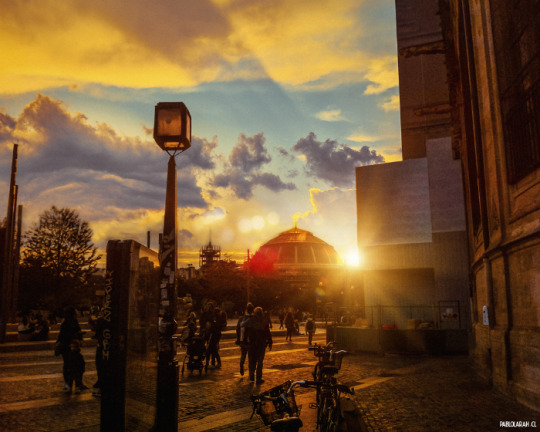


Quarantine Diaries
The Rue Rambuteau is a street in Paris named after the Count de Rambuteau who started the widening of the road prior to Haussmann's renovation of Paris. Philosopher Henri Lefebvre lived on the street and observed from his window the rhythms of everyday life at the intersection located behind the Centre Georges Pompidou.
With a view of the Bourse de Commerce.
The Bourse de commerce (Commodities Exchange) is a building in Paris, France, originally used as a place to negotiate the trade of grain and other commodities, now used to provide services to businesses by the Paris Chamber of Commerce. It has its origins in a circular corn exchange built in 1763–67, with an open-air interior court that was capped by an iron dome in 1811. In a major reconstruction in 1888–89 much of the structure was replaced, although the layout remained the same and the dome was retained with modifications. The dome of the building is listed as a historical monument.
---------------------------------------------------------------
Cariatides engaînées à l'angle du 59 rue Réaumur et de la rue Saint Denis III eme arrondissement
Architecte, Albert Levoisvenel, sculpteur L.Ruffat
L’immeuble à pan coupé qui occupe l’angle de la rue Réaumur et de la rue Saint Denis fut construit par l’architecte Albert Levoisvenel après le percement de la première partie de la rue Réaumur à la fin du Second Empire. De larges ouvertures vitrées, qui sont disposées sous un balcon filant, éclairent l’entresol affirmant la vocation commerciale du lieu. La baie d’axe dont l’arcature surbaissée a été recoupée est enrichie d’un décor de cariatides en relief et de griffons couchés portant le balcon du pan coupé. Les deux figures engaînées, demi nues et dotées d’un chapeau composite, ont été réalisées parle sculpteur L.Ruffat et dérivent d’un même modèle, sans doute un travail d’atelier
(Quoted from cariatides dot canalblog dot com )
------------------------------------------------------------------------------------------
Rue Réaumur
Elle porte le nom du physicien et naturaliste français René-Antoine Ferchault de Réaumur (1683-1757).
Rue Réaumur No 61-63 : construction Art nouveau de style néo-gothique, construite par les architectes Philippe Jouannin et Édouard Singery à partir de 1898.
Les sculptures créées par les frères Pierre François dit « Francis » et Aimé Jacquier « et compagnie » représentent les mois de l'année, les signes du zodiaque et les saisons.
#architecture #arquitectura #arquitetura #StreetPhotography #StreetPhotographyInColors #IG_StreetPhotography #StreetPhotographyCommunity #StreetPhoto #PeopleInFrame #PhotoDocumentary #StreetPhotographyInternational #StreetPhotographyWorldwide #CandidShots #Paris #France #Europe #ParisMaVille . . . . Made with ❤ & @photoshop .
1 note
·
View note
Text
Atomic Chef: Content Draft v1.2
After collecting research for my chosen elements, I compiled the content into a template to help me design a consistent outline for each element's page. This helped me not only determine what content I needed and how to structure it but also provided a handy framework while writing content to make sure each section conveys the appropriate information. To aid understanding, I have done my best to keep the tone casual and stick to short sentences and words.
Atomic Chef
Take the Tour
Let's Get Cooking
Only the Purest Ingredients
What is the Periodic Table?
What make an element?
Elemental Terms
Atomic Mass
Total mass of protons and neutrons in a single atom.
u
The atomic mass unit. Equal to 1/12 the mass of an atom of carbon-12.
Atomic Number
Number of protons in the nucleus.
Chemical Symbol
Shorthand or ‘code’ for a particular element.
Compound
A combination of two or more elements.
Element
A substance that cannot be broken down into simpler pieces. Made of atoms with the same atomic number.
Group
A column on the periodic table. Elements in the same group have similar characteristics which are determined by the outermost electron shells of their atoms.
Period
A row on the periodic table. Elements in the same period have the same number of electron shells.
Atomic Structure
Atom
The smallest particle of a chemical element. Composed of a nucleus (made of protons and neutrons) and the electrons orbiting it.
Electron
A subatomic particle with a negative charge.
Isotope
An isotope of an element is an atom of the same element with a different number of neutrons.
Proton
A subatomic particle with a positive charge. Approximately same mass as neutron.
Neutron
A subatomic particle with no charge. Approximately same mass as proton.
Nucleus
Densest part at the centre of the atom made up of protons and neutrons.
Elements
Iron
Element: Iron
Chemical Symbol: Fe
Atomic Number: 26
Atomic Mass: 55.845
Group: 8
Period: 4
Category: Transition metal
Always grilled until perfection with precisely 26 protons in the nucleus, each 55.845u iron steak is served solid at 20°C. Enjoy it in all dishes featuring red meat, liver, beans, broccoli, spinach, apricots, molasses, cocoa, liquorice, and manufactured steel.
What
A shiny, greyish metal that rusts in damp air.
History
The oldest iron objects date are of meteoric origin. First smelted by the Hittites around 1500BC, it wasn’t until 1722 that René Antoine Ferchault de Réaumur explained the various types of iron.
Facts
90% of all metal that is refined today is iron. Most is used to manufacture steel.
The fourth most abundant element, by mass, in the Earth’s crust.
Biology
The average human contains about 4 grams of iron, mostly in the blood.
Humans need 10–18 milligrams of iron each day.
Calcium
Element: Calcium
Chemical Symbol: Ca
Atomic Number: 20
Atomic Mass: 40.078
Group: 2
Period: 4
Category: Alkaline Earth Metal
Chilled solid at 20°C, each refreshing 40.078u glass of calcium is filled with 20 protons for the best flavour and served in featured blends of milk, cheese, yoghurt, and bones. Vegan options also available, including kale, chia seeds, and almonds.
What
A silvery-white, soft metal. Tarnishes rapidly in air and reacts with water.
History
Compounds of calcium such as lime were known but it wasn't until 1808 that Humphry Davy, also responsible for extracting potassium and sodium, reduced the material and identified calcium.
Facts
The fifth most abundant metal in the Earth’s crust.
Biology
One part of the main component of bone, calcium is essential to all living beings.
The average human contains about 1 kilogram of calcium.
Sodium
Element: Sodium
Chemical Symbol: Na
Atomic Number: 11
Atomic Mass: 22.990
Group: 1
Period: 3
Category: Alkali Metal
With 11 crispy protons, every 22.990u slice of pure sodium is ready to melt in your mouth at 97.794°C. Perfect with a side of chips in dishes such as smoked meats, fish, and poultry, pizza, salted nuts, and baking soda or de-icing roads in winter.
What
A soft metal that tarnishes within seconds of being exposed to the air. Reacts vigorously with water.
History
Salt, a sodium compound, has been known since prehistoric times but sodium wasn’t isolated until 1807 by Humphry Davy. Officially
Facts
The sixth most common element on Earth.
Biology
Your body contain about 100 grams of sodium but is constantly losing it and needs to replace it.
You probably eat about 10 grams of salt every day but we only need about 6 grams (about 2.3 grams of sodium).
Potassium
Element: Potassium
Chemical Symbol: K
Atomic Number: 19
Atomic Mass: 39.098
Group: 1
Period: 4
Category: Alkali Metal
Every 39.098u helping of handpicked potassium is packed with 19 of the freshest protons and melted at a toasty 63.5°C. Find it mixed in today’s specials featuring bananas, baked potatoes, clams, sweet potatoes, watermelons, brussel sprouts, and fertilisers.
What
A soft, silvery metal that tarnishes in air within minutes.
History
Compounds of potassium have been known for centuries but Humphry Davy was the first to produce the element in 1807.
Facts
The chemical symbol K is from the original name proposed for potassium: kali.
Biology
Potassium ions are found in all cells and all in all you store about 140 grams of it in your body.
Recommended intake is 3,500-4700mg a day.
Magnesium
Element: Magnesium
Chemical Symbol: Mg
Atomic Number: 12
Atomic Mass: 24.305
Group: 2
Period: 3
Category: Alkaline Earth Metal
Each decadent 24.305u bar of solid magnesium features a luxurious 12 proton filling. Enjoy melted at 650°C or indulge in it with the finest dishes including dark chocolate, avocados, spinach, black beans, beets, tofu, and fireworks.
What
A shiny silver-grey metal that ignites easily in air and burns with a bright light.
History
Joseph Black was the first person to recognise that magnesium was an element in 1755. // First recognised as an element in 1755 by Joseph Black.
Facts
Magnesium is an essential element of life. Without it photosynthesis could not take place, meaning plants could not capture sunlight and life as we know it would not exist.
Magnesium does not occur uncombined in nature.
The eighth most abundant element in the Earth’s crust,
Biology
There are about 20 grams of magnesium inside you, mainly in your bones.
You need 250–350 milligrams of magnesium every day.
#ixdbelfast#ixd301#elements#periodic table#chemistry#content design#copywriting#process#atomic chef#first draft
0 notes
Text
Pearls Myths and Legends
The restricted geographical distribution of pearl oysters, as well as the myths and legends surrounding pearls retarded scientific knowledge of their training. The Chinese from the V century of our era, intuited in a way quite precise the origin of the pearls, while the Europeans of the century XVI still believed that pearls were formed from raindrops solidified. Until 1710 René-Antoine Ferchault de Réaumur claimed that the pearls were pieces of mother-of-pearl that the animal slowly formed by secreting concentric layers around an irritating foreign body. At the beginning of the 20th century, most researchers were convinced that the pearls were formed in response to irritation caused by the intrusion of a parasite or any foreign body to the animal
0 notes
Photo




Science Saturday!
Here be dragonflies from the sixth volume of Mémoires pour servir à l'histoire des insectes by French entomologist René Antoine Ferchault de Réaumur (1683-1757), published in Paris by l'Imprimerie royale from 1734-1742. The set includes over 260 engraved illustrations of insects.
Réaumur researched a wide array of topics throughout his life, beginning with an interest in mathematics and physics. In 1708, at the age of twenty-four, he was elected a member of the Académie des Sciences and contributed numerous papers to the Mémoires de l'Académie. In 1710, King Louis XIV put Réaumur in charge of a government project to create a description of the industry and natural resources of France. Réaumur is noted for his improved techniques for making steel, soft iron, and cast iron by inventing the cupola furnace, which is still used today. He also devised a temperature scale that bears his name. Natural history was a particular interest of his, and he wrote extensively on his research of plants, animals, and insects.
The dragonfly plates featuring today were engraved by Pierre Filloeul and Jean Baptiste Haussard.
View more posts from Mémoires pour servir à l'histoire des insectes
View more insect posts!
–Sarah, Special Collections Graduate Intern
#Science Saturday#Mémoires pour servir à l'histoire des insectes#René Antoine Ferchault de Réaumur#De l'Imprimerie royale#Pierre Filloeul#Jean Baptiste Haussard#insect illustration#scientific illustration#science illustration#natural history#natural history illustration#engraving#dragonfly#dragonflies#Sarah Finn#sarah
52 notes
·
View notes